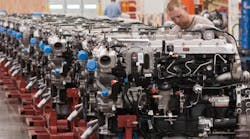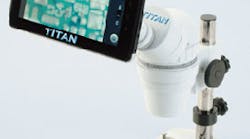The General Motors China Advanced Technical Center in Shanghai has produced a magnesium low-pressure diecasting, calling it a “milestone in lightweight automotive research.” The part is described as a chassis system component that is 30% lighter than a comparable aluminum diecasting, contributing to overall fuel savings by reducing vehicle mass without diminishing structural strength and integrity.
"Today’s consumers want their vehicles to be more stylish, safer, more durable, more affordable, and more fuel-efficient,” stated GM China Science Lab director John Du. “This is resulting in demand for lightweight, yet strong, materials that make a vehicle more economical to operate."
GM estimates that using magnesium may result in a 7% improvement in fuel economy for every 150-kg (330 lb) reduction in vehicle weight.
The 65,000-square-meter ATC is the research center for several GM technical and design organizations — the China Science Lab, Vehicle Engineering Lab, Advanced Materials Lab, Advanced Powertrain Engineering Lab and Advanced Design Center. When completed later this year, the ATC will include 62 test labs and nine research labs, and employ over 300 engineers, designers, researchers, and technicians.
The magnesium casting research was undertaken at the ATC’s “micro foundry” and formability lab. Both were started up in the first phase of the ATC project, which includes a battery cell testing lab, battery material lab, metallography and electrochemical lab, and cell fabrication lab. The focus of research there is on lightweight materials (e.g., magnesium) and electric-vehicle batteries, among other advanced technology vehicles.
"The successful production of a part made from magnesium alloy is an important breakthrough for the ATC in lightweight automotive materials research. Satisfying the demands of our customers through new technological achievements is significant for GM’s ongoing growth in China and the Chinese automotive industry," according to Du.



